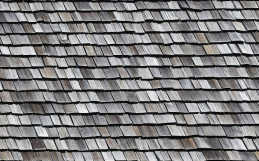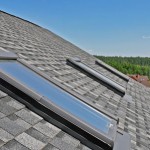For many of us, we don’t really spend a lot of time thinking about the roof over our heads until there’s a problem. When buying a home, we make sure to get the roof inspected to find glaring issues or to see how much “life” is left in the materials. But other than that, unless there are glaring issues, we just kind of assume the roof system is in good shape.
Until it isn’t. Once it becomes clear that a new roof is needed, there are several things to consider. Cost always plays a huge factor, although it shouldn’t be the only deciding point. The look of the roofing, if you have a sloped or flat, maintenance, and the longevity of the material used.
How Often Should You Replace Your Roof?
In a perfect world, every type of roof material would reach its maximum life expectancy. The structure under the roofing would remain sound and falling branches would land far away from the home. We live in the real world, of course, and all four seasons can wreak havoc on Pacific Northwest roofing.
Because of this, the roof’s lifespan will depend on the material and how it holds up in our part of the world. Extremely wet weather (including rain, snow, ice, etc.) means cedar shingles will need more attention. In areas of high wind, asphalt shingles may need to be replaced more often.
There are some general outlines when it comes to the lifespan of different roofing materials. As always, proper installation is key no matter what material is used. No matter how good a roof looks, incorrect installment means you’ll be dealing with roof leaks, water damage, and roof replacements much sooner than you should.
Flat roof materials will need to be replaced or refinished anywhere from 5 to 25 years. Asphalt rolls, rubber membranes, or built-up roofing materials need to be kept clear of debris and inspected annually. Signs of damage on these roofs are hard to see from the ground, so you’ll need to make a special effort to inspect.
Asphalt Shingles – Asphalt shingle roofs are quite common because they’re lightweight, easy to install, and less expensive than other options. But they also don’t last as long, anywhere from 15-30 years. They are susceptible to damage in inclement weather, especially high winds, and breakdown over time.
Cedar Shake Shingles – As far as aesthetics go, cedar shake shingles offer a very distinct look and are tailor-made for certain architectural designs, such as farmhouses or cottages. But while cedar is a very strong material overall, they require a lot of maintenance too. You can expect to replace cedar shingles every 20 years, although you may get an extra decade or two if you’re very diligent with cleaning and retreating the shingles.
Composite Shingles – These shingles can be made to replicate many types of shingles, including shake and slate shingles. Made from recycled materials as well as offering some energy-efficient benefits, these shingles look great and are eco-friendly. They can also last up to 50 years depending on the brand or style you go with.
Metal Roofs – Used in the public sector for decades because of their longevity, metal roofing has seen a resurgence in popularity for residential homes. They come in many styles, hundreds of colors, and last anywhere from 75 to 100 years with little to no maintenance.
Slate Roofs – Slate is extremely durable and has a similar lifespan to metal roofing (100 years). It’s a very heavy material, though, so you’ll want to make sure the structure can handle the weight. But once in place, it is definite “set it and forget it” roofing material.
When it comes time to replace your roof, make sure you go with an experienced roofing company that has been working with many, if not all, of the above materials. Warner Roofing and Construction has been performing tear-offs and roof installations since 1992 and will transform your regular roof into a thing of beauty.







